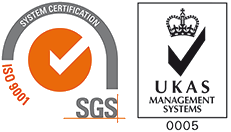MAN’S BEST FRIEND
Although it is still early days, the potential for dogs to significantly assist in the detection of human illness and disease is huge.
Professor Steve Lindsay and a handful of col-leagues recently attended the American Society of Tropical Medicine and Hygiene’s annual meet-ing in New Orleans. They were there for one reason: to present groundbreaking research into sniffer dogs and their ability to identify the odour of malaria.
“While our findings are at an early stage, in principle we have shown that dogs could be trained to detect malaria-infected people by their odour with a credible degree of accuracy,” said Lindsay, a Public Health Entomologist at Dur-ham University in the UK. “This could provide a non-invasive way of screening for the disease at ports of entry in a similar way to how sniffer dogs are routinely used to detect fruit and vegetables or drugs at airports.”
Apart from the obvious benefits of helping to prevent the spread of malaria and ensuring that those who require treatment receive it, the study raised the profile of a little known field of medical research – the use of dogs to identify the odour of human disease.
Amongst the list of institutions that had con-tributed to the research was a UK charity called Medical Detection Dogs (MDD). Co-founded by Dr Claire Guest just over 10 years ago, it not only contributes to the fight against cancer, but helps with the detection of life-threatening diseases, despite receiving no government funding.
Although to many it sounds like science fic-tion, the charity combats diseases in two ways. Firstly, through the use of bio-detection dogs that are trained to detect the odour of diseases such as cancer in urine, breath and swab samples. And secondly, via medical alert assistance dogs, which can detect minute changes in an individual’s per-sonal odour and alert them to life-threatening health conditions. Both utilise the power of a dog’s smell.
Dogs are able to detect tiny odour concen-trations – around one part per trillion (the equivalent of one teaspoon of sugar in two Olympic- sized swimming pools) – and are therefore potentially able to detect diseases much earlier than is currently possible. As such, the charity is already working with the UK’s National Health Service on an ethically-approved study into the dogs’ ability to detect urological cancers. It is also running a proofof- principle trial exploring the ability of dogs to detect breast cancer.
Medical alert assistance dogs are also supporting people with complex health conditions – people who have limited awareness of an impending life-threatening medical event. To date, MDD has placed over 100 such dogs, helping people with type one diabetes, postural orthostatic tachycardia syndrome, endocrine disorders, and those who suffer from episodes of sudden health deterioration.
The malaria research, however, represented the charity’s first foray into the detection of parasitic diseases.
“The possible potential to train dogs to detect tropical disease where diagnostics are poor, such as leishmaniasis and trypanosomiasis, is huge,” said Guest, who was a co-author of the study. “I believe that this study indicates that dogs have an excellent ability to detect malaria and if presented with an individual infected with the parasite or a piece of recently worn clothing, their accuracy levels will be extremely high. This is a reliable, non-invasive test and is extremely exciting for the future.”
Although the research was led by Durham University and funded by the Bill & Melinda Gates Foundation, it was also carried out by the London School of Hygiene & Tropical Medicine (LSHTM), MDD, and the Medical Research Council Unit The Gambia (MRCG) at the London School of Hygiene & Tropical Medicine. Additional partners included the University of Dundee and the National Malaria Control Programme, The Gambia.
Researchers used nylon socks to collect foot odour samples from apparently healthy children aged five to 14 in the Upper River Region of The Gambia, in West Africa. Using a simple finger-prick test the children were also screened to determine if they had the malaria parasite plasmodium falciparum in their blood.
The sock samples were then transported to MDD’s purpose-built research and training facilities near Milton Keynes, where two dogs, a Labrador-Golden Retriever cross called Lexi, and a Labrador called Sally, were trained to distinguish between the scent of children infected with malaria parasites and those who were uninfected.
In total 175 sock samples were tested, including those of all 30 malaria-positive children identified by the study, and 145 from uninfected children. The dogs were able to correctly identify 70% of the malariainfected samples. What's more, the dogs were also able to correctly identify 90% of the samples without malaria parasites.
Professor Umberto D’Alessandro, Unit Director at the MRCG and co-author of the research, said: “Detecting malaria-infected but otherwise healthy people is a laborious and time-consuming process that requires collecting a blood sample to be then processed in a well-equipped laboratory.
“New approaches to facilitate the identification of infected individuals to be treated would help enormously in addressing the human reservoir of infection and possibly reduce malaria transmission. The opportunity to use trained dogs for this purpose is promising. Results show that it may be possible to identify infected people by their body odour.”
An accompanying study introduced a fake biodetection dog to Gambian villages to gauge their acceptability, with researchers reporting that most people were favourably disposed to their use in principle.
The results of the study are broadly in line with the criteria for procurement of rapid diagnostic tests. However, further research is needed to see if dogs can directly sniff out malaria in people infected with the disease. Future studies are also needed to see if dogs can detect malaria in the odour of infected people from other parts of the world before the animals could be used in the field.
None of this comes cheap. The cost of training and placing a medical alert assistance dog, for instance, is $37,000, while the cost of training a bio-detection dog (which only works on site) is $14,700, with an ongoing monthly cost of $770. As MDD is not supported by the UK government, the cost of training the dogs is currently covered by sponsorship and fundraising.
These costs cover a dog’s training, with the length of time to train a bio-detection dog varying, depending on a number of different factors, including the odour they are being trained to detect, the sample type they are using, and the dog itself (all dogs learn at d ifferent speeds). It genera, i t t akes s ix to e ight months for a dog to reach a good level of performance, with the dogs taught using reward-based methods and clicker training.
MDD isn’t alone, of course. The US-based Dogs for Diabetics trains dogs to recognise the chemical changes in blood sugar in order to provide an alert prior to the onset of hypoglycaemia, while other researchers have used dogs to detect ovarian cancer. Clostridium d ifficile, a bacteria that can infect the bowel and cause diarrhoea, has also been found to be detectable by dogs.
WHY MALARIA MUST DIE
THE WORLD
Health Organisation estimates that there were 219 million cases of malaria in 2017
MALARIA
continues to claim the lives of more than 435,000 people each year, largely in Africa
CHILDREN
under five are especially vulnerable; every two minutes a child dies from this preventable and curable disease
THE NUMBER
of malaria cases in Rwanda fell by 430,000 between 2016 and 2017
IN 2017,
an estimated US$3.1 billion was invested in malaria control and elimination efforts globally by governments of malaria endemic countries and international partners
15 COUNTRIES
in sub-Saharan Africa and India carried almost 80% of the global malaria burden. Five countries accounted for nearly half of all malaria cases worldwide: Nigeria (25%), Democratic Republic of the Congo (11%), Mozambique (5%), India (4%) and Uganda (4%)
AN ESTIMATED
276 million rapid diagnostic tests (RDTs) were sold globally in 2017








